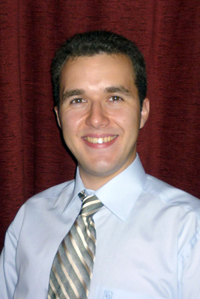The Vedernikov Number: Concept and Practice
Aleksandr Gostomelskiy

Open-channel flow can be steady or unsteady.
Flow in an open channel is said to be steady if the depth of flow does not change or if it can be assumed to be
constant during the time interval under consideration. On the other hand, in unsteady flow, the flow depth changes
with time. The equations which govern the steady flow are well known (Chezy, Manning, and the conservation of energy equation).
For unsteady flow, there are a number of equations which are much more complex: the continuity
and momentum equations.
Examples of unsteady are found in rivers and streams during flood, storm runoff in sewers, tidal flows in estuaries, and
in the formation of roll waves. The case of roll waves, a special case of unsteady flow, is the focus of this article.
Usually, uniform flow in an open channel becomes unstable when the velocity
is very high or the slope is very steep. Under these conditions, the instability of the free surface is characterized
by the formation of a train of roll waves. The earliest theoretical description of this instability
was given in 1945 by the Soviet scientist V. V. Vedernikov.
The criterion, presented to the international scientific community in 1946, is now referred to as
the Vedernikov number V.
In its original form, the Vedernikov number was expressed as:
V= xγv/(vw - v)
in which x= is exponent of hydraulic radius in the frictional power law
(x= 2 for laminar flow, x= 0.5 for turbulent flow if the Chezy formula is
used, x= 2/3 for turbulent flow if the Manning equation is used);
v= mean velocity;
vw= absolute velocity of the roll waves in the channel;
and γ= cross-sectional shape factor
(γ varies in range between 0 and 1).
To provide a physical interpretation of the Vedernikov number, a few definitions are in order.
In unsteady flow, a wave is a temporal variation of
flow depth or rate of discharge. Another important concept is the celerity, which represents the
wave velocity taken relative to the flow it is traveling in. In other words, celerity is a measure of
rapidity of surface waves, which could travel in the upstream or downstream direction.
In unsteady flow, there
are two main wave types: kinematic and dynamic. These concepts were developed in order to calculate
overland flow. The kinematic wave technique simulates runoff concentration in the absence of
runoff diffusion. The dynamic wave technique takes into account runoff concentration, diffusion,
and dispersion processes. Flow in a channel will become unstable if the value of kinematic wave
celerity is larger than the value if dynamic wave celerity. Thus, the Vedernikov number is best
characterized as the ratio of the relative celerity of kinematic waves to the relative celerity of dynamic waves.
Essentially, the Vedernikov number is a measure of flow stability. The flow regime is stable if the V<1,
neutral if V=1, and unstable if V>1. When the flow is stable (V<1) the energy-transporting waves (dynamic) travel
faster than mass-transporting waves (kinematic); when the flow is neutral (V=1) these waves travel at the same
speed; when the flow is unstable (V>1) the mass-transporting waves (kinematic) travel faster than energy-transporting
waves (dynamic). Roll waves form when V ≥ 1. This is of practical interest, particularly
in the area of steep-channel design, where minimization of cost is crucial.
Hydraulic engineers are able to
design channels to accomodate roll waves.
As Dr. V. M. Ponce mentioned at one of his Open-Channel Hydraulics lectures at San Diego State University,
the La Joya Canal in Arequipa, Peru, serves as a good example for roll wave design. Initially engineers did not take
into consideration the Vedernikov number, and roll waves would
form; the resulting channel was inadequate and water was lost. To fix this problem, engineers had to design
another channel with special drop structures to eliminate the surface instability. It follows that
the Vedernikov number is of great importance, both in theory and practice.
REFERENCES
Cheng-Lung Chen. 1992. Vedernikovís Number as a Measure of Flow Stability, Hydraulic Engineering, Saving a Threatened Resource- In Search for Solutions, Proceedings of the Hydraulic Engineering Sessions, Water Forum, Baltimore, MA, August 2-6.
Chow, V. T. 1959. Open-Channel Hydraulics, McGraw-Hill, New York.
Craya, A. 1952. The criterion for the possibility of roll wave formation, Gravity Waves, Circ. 521, 141-151, National Institution of Standards and Technology, Gaithersburg, MD.
Ponce, V. M. 1989. Engineering Hydrology: principles and practice, Prentice Hall, Englewood Cliffs, N.J.
Ponce, V. M. 1991. New Perspective on the Vedernikov Number, Water Resources Research, 27(7), 1777-1779.
Ponce, V. M. and M. P. Maisner. 1993.
Verification of Theory of Roll Wave Formation, Journal of Hydraulic Engineering, 119(6), 768-773.
Roberson, J. A., J. J. Cassidy, and M. H. Chaudhry. 1998. Hydraulic Engineering, John Wiley & Sons, New York.